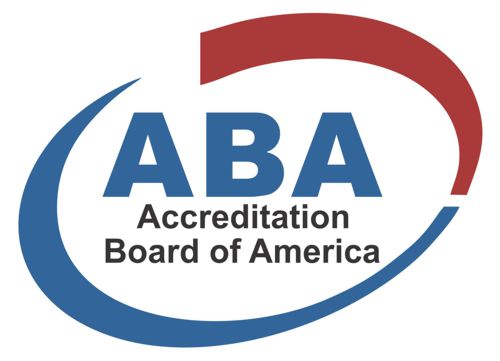3M made news in December, announcing it will end the manufacture of per- and polyfluoroalkyl substances (a.k.a. PFAS) by the end of 2025. For those of us who have been concerned about toxic chemistries common in everyday products, this is great news, even if decades late.
PFAS, commonly referred to as “forever chemicals” due to their stability in the environment, have long been under fire from environmentalists and human health advocates due to their potential for toxicity. Sustainability professionals and leading companies have been working toward elimination of these chemicals from products ranging from fast food wrappers to building products for more than a decade. The connection between 3M and PFAS has long been an issue here in my home state of Minnesota, where elevated levels of the chemicals were first identified in the drinking water of some eastern Saint Paul suburbs in 2004. The state sued 3M over these elevated levels of PFAS back in 2010, a case ultimately settled for $850 million in early 2018. Articles about PFAS abound; you can read some of GreenBiz’s past coverage of the topic here, here, here and here.
All materials should be chemically harmless before we consider them recyclable.
3M’s announcement gave me flashbacks to the beginning of my career, when I was working with suppliers and product engineers trying to eliminate problematic chemicals from products. When I started doing corporate sustainability work almost exactly 10 years ago, there were three major hurdles to eliminating incumbent chemistry from products:
- Gathering the information from the suppliers to understand what was in the materials in the first place was nearly impossible. It is really quite shocking how little information manufacturers often have about the chemistry in their products.
- Many of the safer alternatives had yet to be invented, and many of those that have been created since that time are still not manufactured at scale, making substitution quite difficult.
- When there were viable alternatives, convincing both internal stakeholders and suppliers that eliminating chemicals of concern was possible and necessary was difficult. Once a material and associated chemistry are chosen, it can be incredibly difficult to dislodge them from use.
There’s probably a good joke about these challenges here, but I’ll leave it to the GIF below to illustrate.

Fortunately for everyone involved, the first hurdle has gotten slightly smaller over the years as chemical transparency has become more common. The openness of suppliers to disclose more information is due to a combination of:
In thinking about PFAS and other chemicals of concern, I want to point you to some resources where you can learn more about common chemicals with known human and environmental hazards.
“Green Chemistry: Theory and Practice”
The starting point for anyone interested in decreased toxicity for materials and products should be this seminal book on the topic of green chemistry, published 25 years ago this year. It still holds up as one of the best guides to improving the chemistry of products and the authors of the book, Paul Anastas and John Warner, are two of the most sought-after minds on the subject. I would recommend this book to anyone interested in starting their company’s journey towards greener chemistry.
The Six Classes
At the entry level, you can learn a lot about the toxic legacy of chemicals from the Six Classes, presented by the Green Science Policy Institute. This overview of PFAS, antimicrobials, flame retardants, bisphenols and phthalates, some solvents and certain metals educates the learner about some of the most ubiquitous uses of toxic chemicals in commerce today. The approach is straightforward and advocates for the elimination of chemicals in the six classes. The institute also calls for avoiding substitution of toxics with similar chemicals (structure or functional groups) due to the potential for similar toxicity endpoints with that approach (see Bisphenol A to Bisphenol S debacle).
Pharos Project
The Healthy Building Network has done us quite the favor with Pharos Project, a chemical database that outlines known chemical toxicity endpoints for over 146,000 chemicals. The resource can be searched by name, Chemical Abstract Service number (CAS), common uses or even common products. It is available for a small annual fee, but if you’re interested, here’s an example of the information that can be found for a chemical, in this case benzene. While not every chemical has extensive information due to lack of toxicity data (another big problem), Project Pharos is a great tool that I used almost daily in my work as a corporate sustainability practitioner.
GreenScreen for Safer Chemicals
I discovered the GreenScreen for Safer Chemicals comparative hazard assessment protocol very early in my career and am still thankful I did. The protocol walks trained users through 18 human and environmental health endpoints to assess individual chemicals, ultimately culminating with a benchmark score of benchmark one (BM-1) through benchmark four (BM-4) — with BM-1 being the most hazardous materials and BM-4 being the most benign. This assessment methodology was developed by Clean Production Action, a Massachusetts nonprofit specializing in safer chemistry. It offers many levels of training from a free 60-minute webinar to an intensive 120-hour Authorized Practitioner program. Familiarizing oneself with this program and using it in conjunction with the Pharos Project database can be quite useful in helping your organization design safer products and optimize existing chemistries.
The takeaway for me? We cannot expect to transition to a sustainable circular economy by continuing to rely on toxic chemistry. We should strive for infinite circulation of safe materials and nutrients in cycles. In other words, all materials should be chemically harmless before we consider them recyclable.
If you’d like to read the original source of this article please click here Visit Source
